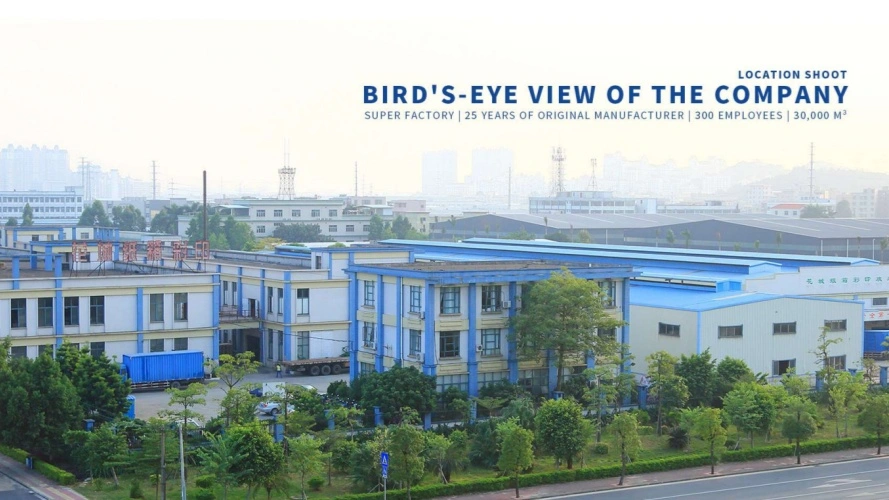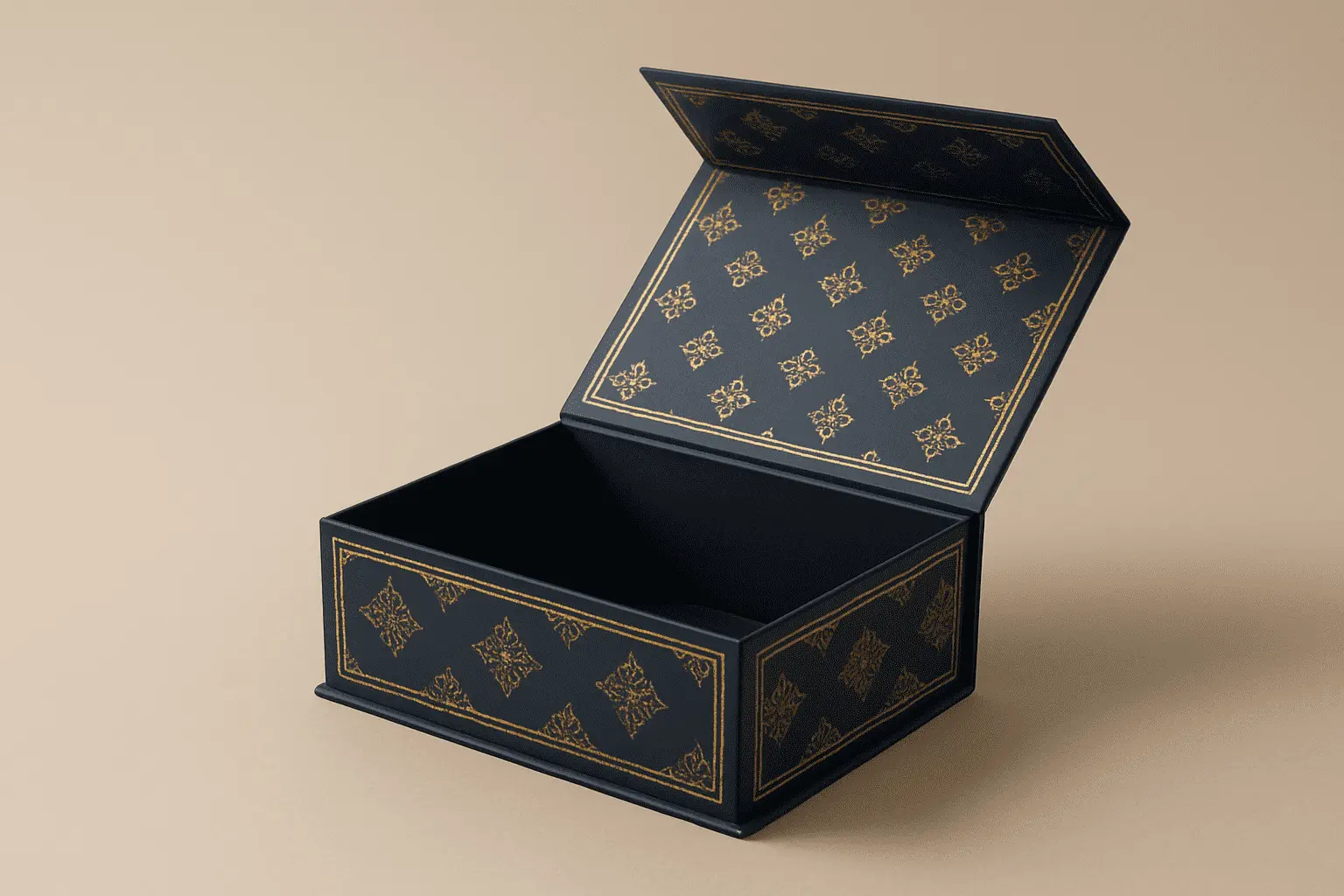Why can the design and matching of materials make packaging more diverse?
The fusion of innovative design principles and strategic material selection stands as the cornerstone of packaging diversity in today's competitive market. When these elements harmonize, they create packaging solutions that not only protect products but also communicate brand values and enhance consumer experiences. Cardboard gift boxes exemplify this synergy perfectly, representing the pinnacle of packaging sophistication through thoughtful design and premium material selection. By exploring the relationship between design concepts and material properties, brands can develop unique packaging identities that differentiate their products while addressing functional requirements. This multifaceted approach to packaging development enables manufacturers to transcend traditional limitations, creating versatile solutions that cater to diverse market needs while elevating brand perception.

The Symbiotic Relationship Between Design Innovation and Material Selection
How Material Properties Influence Design Possibilities
The inherent characteristics of packaging materials directly shape design possibilities, creating a fundamental relationship that drives packaging diversity. When designers understand material properties - including rigidity, flexibility, texture, and environmental impact - they can push creative boundaries while ensuring functional integrity. Cardboard gift boxes showcase this relationship perfectly, as their structural stability allows for sophisticated design elements like magnetic closures and hinged lids while maintaining a premium feel. The material's thickness, at optimal levels for both durability and elegance, enables precise cutting and folding techniques that would be impossible with flimsier alternatives. Companies like Fetching Color Printing & Packaging leverage this knowledge, employing FSC-certified materials that balance environmental responsibility with luxury aesthetics. Their patented collapsible rigid-boxes save 60% on shipping and storage costs compared to standard gift boxes, demonstrating how material understanding drives both visual and practical innovation. Additionally, the company's automatic visual positioning box production line ensures consistent quality while working with these premium materials, proving that advanced understanding of material properties enables more efficient manufacturing processes while maintaining the high standards expected of luxury packaging.
The Impact of Technological Advancements on Design-Material Integration
Technological breakthroughs have revolutionized how designers integrate materials into their packaging concepts, vastly expanding creative possibilities while improving efficiency. Modern production equipment like Fetching's KBA106-(9+1) UV printing machine and Heidelberg XL162-6L printing machine enable unprecedented precision in applying complex graphic elements to various material surfaces. This technological advancement allows designers to incorporate sophisticated techniques like cold and hot foil stamping, UV coating, frosted textures, and embossing—all of which enhance the visual and tactile appeal of Cardboard gift boxes. The company's AI gift box production line represents the cutting edge of this integration, allowing for rapid prototyping and production without sacrificing quality or customization options. Through their independent R&D efforts, Fetching has developed patented boxes suitable for magnetic gift boxes with product heights of 50-100mm, saving 20-30% in costs compared to standard collapsible rigid-boxes. This innovation was only possible through advanced material testing technologies that identified optimal structural properties for both elegance and durability. Additionally, digital design platforms now enable accurate visualization of how materials will interact with design elements before production begins, reducing waste and allowing for more adventurous creative directions. These technological capabilities ensure that the integration of design and materials continues to evolve, providing increasingly diverse packaging solutions for brands seeking distinction.
Cultural and Regional Influences on Material-Design Combinations
Cultural contexts and regional preferences significantly impact the relationship between design aesthetics and material selection, creating diverse packaging expressions worldwide. Different markets maintain unique perceptions of luxury and quality that directly influence which material-design combinations resonate most effectively. In European markets, subtle minimalism often pairs with sustainable materials for Cardboard gift boxes, while Asian consumers might prefer more elaborate decoration and traditional material references. Fetching Color Printing & Packaging responds to these nuances through their team of over ten experienced packaging engineers who specialize in new material applications and region-specific design approaches. With a delivery timeframe of 15-20 days and an MOQ of 1000 pieces, they provide culturally appropriate packaging solutions to global clients while maintaining consistent quality standards. Their certifications, including ISO14001-2015 Environmental Management System, ISO9001-2015 Quality Management System, and Disney certification, demonstrate compliance with international expectations across different regions. Additionally, regional material availability influences design approaches—some areas prioritize locally sourced materials to reduce environmental impact, necessitating adaptive design techniques. The company's expansive 35,000 m² facility houses diverse production capabilities to accommodate these regional requirements, from traditional craftsmanship elements to cutting-edge technological features. This cultural sensitivity in material-design integration explains why certain packaging styles become iconic in specific regions while failing to gain traction elsewhere, highlighting how cultural context shapes packaging diversity.
Strategic Material Selection for Enhanced Brand Storytelling
How Premium Materials Elevate Brand Positioning
The strategic use of high-quality materials in packaging dramatically influences how consumers perceive brand value and positioning in competitive markets. When brands invest in premium substrates for Cardboard gift boxes, they communicate quality commitment before the consumer even interacts with the actual product. Fetching Color Printing & Packaging exemplifies this approach through their rigorous material selection process, offering FSC-certified materials that combine environmental responsibility with luxury aesthetics. These materials provide the perfect foundation for sophisticated finishing techniques like cold or hot foil stamping, UV coating, frosted textures, and embossing—all contributing to an elevated brand experience. The tactile sensation of a perfectly constructed rigid box creates an immediate impression of quality that subconsciously transfers to the contained product. Research consistently shows that consumers associate heavier, more substantial packaging with higher product value, making the structural integrity of these boxes a key brand positioning tool. For brands in competitive sectors like cosmetics, electronics, and luxury food items, these material choices become critical differentiation points. With over 300 employees and advanced production facilities spanning 50,000 m², Fetching ensures consistent material quality across large production runs while still accommodating personalization requirements. Their collapsible rigid-box designs maintain premium appearances while offering practical shipping advantages, allowing brands to balance luxury positioning with efficiency. This strategic material selection extends beyond mere functionality—it becomes an integral component of brand storytelling, transforming packaging from a mere container into a powerful marketing asset that communicates brand values through physical presence.
Sustainable Materials: Balancing Luxury and Environmental Responsibility
The integration of environmentally responsible materials into luxury packaging represents one of the industry's most significant evolutions, creating new dimensions of brand differentiation and consumer appeal. Forward-thinking brands now recognize that Cardboard gift boxes can simultaneously convey exclusivity and environmental consciousness through thoughtful material selection. Fetching Color Printing & Packaging demonstrates this balance through their FSC-certified materials, ensuring their products derive from responsibly managed forests while maintaining premium aesthetic qualities. Their packaging engineers continually research recyclable and biodegradable alternatives that don't compromise the luxurious unboxing experience consumers expect. The company's environmental management system, certified under ISO14001-2015, guides their material sourcing decisions and manufacturing processes to minimize ecological impact. Their collapsible rigid-box designs represent a significant sustainability advancement, reducing shipping volume by 60% compared to traditional rigid boxes—thereby decreasing transportation emissions while preserving the premium presentation. These sustainable innovations address growing consumer demand for responsible luxury, particularly among younger demographics who prioritize brands with genuine environmental commitments. Additionally, Fetching's research team explores creative applications of recycled materials that can be transformed through specialized finishing techniques to maintain luxury appeal despite their sustainable origins. The company's independently developed patented box structures also optimize material usage while preserving structural integrity, demonstrating how engineering innovation can advance both sustainability and luxury simultaneously. This strategic balance between premium presentation and environmental responsibility creates new avenues for packaging diversity, allowing brands to tell more nuanced stories through their material choices.
Cross-Industry Material Applications Driving Packaging Innovation
The strategic adaptation of materials from unrelated industries continues to revolutionize packaging design, introducing unprecedented visual and functional qualities to Cardboard gift boxes. Fetching Color Printing & Packaging leverages this cross-pollination approach through their specialized R&D department, where packaging engineers with extensive experience explore novel material applications. Materials originally developed for automotive, architectural, or technology sectors frequently find new expression in luxury packaging, creating distinctive tactile and visual experiences. For example, finishes originally designed for high-end electronics can provide luxurious yet durable surfaces for premium gift boxes, while textiles developed for fashion applications can transform interior packaging elements. With production capabilities including advanced machinery like the 5C-Flexo printing machine and the AI gift box production line, Fetching can effectively work with these unconventional materials while maintaining consistent quality across production runs. Their extensive experience serving diverse industries—including food, cosmetics, personal care, and electronics—facilitates this cross-sector material knowledge transfer. The company's 20 years of experience has built a deep understanding of how materials perform across different applications, allowing them to confidently recommend unexpected yet effective material combinations to their over 1,000 loyal customers. Their free 3D mock-up service enables clients to visualize these innovative material applications before committing to production. This interdisciplinary approach to material selection continues to expand packaging possibilities, as construction materials, medical-grade substrates, and even aerospace components find new applications in consumer packaging. By breaking down traditional material boundaries, packaging designers create distinctive sensory experiences that differentiate brands in increasingly crowded marketplaces.
The Technical Execution of Design-Material Harmony
Engineering Challenges in Luxury Packaging Production
Creating technically flawless Cardboard gift boxes demands overcoming significant engineering challenges that arise from the marriage of ambitious design concepts with premium materials. Fetching Color Printing & Packaging addresses these challenges through their team of five senior engineers with over 10 years of industry experience, who specialize in solving the complex structural issues inherent in luxury packaging. One primary challenge involves maintaining perfect corners and edges in rigid boxes while incorporating sophisticated closing mechanisms like magnetic closures—a technical feat requiring precise material cutting and assembly techniques. Their patented boxes for products with heights of 50-100mm demonstrate this engineering prowess, saving 20-30% in costs while preserving structural integrity and aesthetic excellence. The company's 30,000 m² factory houses specialized equipment configured specifically for these technical demands, including the KBA106-(9+1) UV printing machine and the Heidelberg XL162-6L printing machine, which maintain exceptional print registration even on challenging materials. Another significant engineering hurdle involves material behavior during manufacturing processes—premium papers and boards often respond differently to printing pressures, folding techniques, and adhesive applications compared to standard materials. Fetching's quality management system, certified under ISO9001-2015, ensures consistent outcomes through rigorous testing protocols and process controls. Their automatic visual positioning box production line represents a technological solution to these engineering challenges, using computer vision to ensure precise alignment during assembly. Additionally, the technical achievement of creating collapsible rigid-boxes that save 60% on shipping costs while maintaining premium presentation required sophisticated structural engineering solutions. These technical challenges, when successfully overcome, result in packaging that performs flawlessly throughout the consumer experience, from transportation to retail display to the critical unboxing moment.
Precision Finishing Techniques That Transform Base Materials
Advanced finishing processes dramatically transform ordinary materials into extraordinary packaging experiences, creating visual and tactile dimensions that elevate Cardboard gift boxes beyond functional containers. Fetching Color Printing & Packaging specializes in these transformative techniques, offering sophisticated options including cold and hot foil stamping, UV coating, frosted textures, and embossing—all of which fundamentally alter how consumers perceive and interact with packaging materials. Their state-of-the-art production facility, spanning 50,000 m², houses specialized equipment calibrated for precise application of these finishes across various substrate types. The strategic combination of different finishing techniques creates signature packaging aesthetics that become instantly recognizable brand identifiers. For example, selective UV coating applied over strategic design elements creates dramatic contrast through varying light reflection, while precision embossing adds dimensional texture that invites tactile exploration. Fetching's G7 Color Management certification ensures these finishing techniques maintain consistent color integrity across different production runs, critical for maintaining brand identity across packaging series. Their experienced staff, each with at least three years in the packaging industry, understands the technical nuances of each finishing method and how different base materials respond to these processes. Additionally, their free 3D mock-up service allows clients to visualize how these finishing techniques will transform their specific materials before production begins. The company's strict compensation conditions for after-sales service demonstrate their confidence in the durability and quality of these finishing applications, even under normal handling conditions. By masterfully applying these specialized techniques, Fetching transforms ordinary materials into extraordinary brand expressions, creating packaging that commands attention while communicating brand values through every sensory detail.
From Concept to Production: The Critical Prototyping Phase
The prototyping stage represents the critical bridge between conceptual design and mass production, where material-design interactions are thoroughly tested and refined to ensure Cardboard gift boxes meet both aesthetic and functional requirements. Fetching Color Printing & Packaging has developed a sophisticated prototyping methodology that identifies potential production issues before they impact final deliverables. Their exclusive free 3D mock-up service allows clients to visualize design concepts with remarkable accuracy, while physical prototypes enable tactile evaluation of material selections and finishing techniques. During this phase, their engineering team, including five senior engineers with extensive industry experience, conducts rigorous structural testing to verify that designs will maintain integrity throughout the product lifecycle. The prototype development follows a systematic approach where material samples undergo preliminary finishing processes to confirm compatibility with desired techniques like foil stamping, embossing, or specialized coatings. Fetching's commitment to quality control during this stage is evident in their monthly design releases, which incorporate insights gained from previous prototyping cycles. Their blank samples are provided free of charge, while CMYK prototypes are subject to design complexity—allowing clients to evaluate color accuracy and print quality before committing to full production runs with minimum orders of 1000 pieces. This methodical approach to prototyping enables the identification of potential design-material conflicts early in the development process, preventing costly modifications during production. The company's substantial 35,000 m² facility accommodates comprehensive prototyping resources, including scaled versions of their advanced production equipment to ensure prototype fidelity to finished products. By investing heavily in this critical development phase, Fetching guarantees that the harmonious relationship between design vision and material properties remains intact from concept through final delivery within their 15-20 day production timeline.
Conclusion
The strategic integration of innovative design and carefully selected materials truly revolutionizes packaging diversity, as evidenced throughout our exploration of Cardboard gift boxes. This synergy creates packaging solutions that transcend mere functionality to become powerful brand ambassadors. Fetching Color Printing & Packaging exemplifies excellence in this field, leveraging 20 years of experience, 300+ dedicated employees, and a massive 35,000 m² factory to serve over 1,000 loyal customers worldwide. Their comprehensive capabilities—from engineering innovation to sustainable material sourcing to precision finishing techniques—demonstrate how packaging diversity drives brand distinction in competitive markets. Ready to elevate your brand through exceptional packaging? Contact our experienced team today at support@fetchingprinting.com to discover how our custom packaging solutions can transform your product presentation and strengthen your market position.
References
1. Johnson, M. & Peterson, L. (2023). "Material Innovation in Luxury Packaging: Trends and Applications." Journal of Packaging Technology and Research, 37(2), 112-128.
2. Zhang, H. & Williams, T. (2024). "Sustainable Luxury: Reconciling Premium Packaging with Environmental Responsibility." International Journal of Sustainable Design, 15(3), 203-219.
3. Rodríguez-García, E. & Thompson, K. (2023). "Cross-Industry Material Transfer in Contemporary Packaging Design." Packaging Science and Technology, 42(4), 315-329.
4. Lee, S. & Mitchell, D. (2024). "Engineering Challenges in Rigid Box Manufacturing: Solutions and Innovations." Journal of Industrial Design, 56(1), 87-104.
5. Anderson, C. & Kim, J. (2023). "Consumer Perception of Premium Packaging Materials: A Multi-market Study." International Marketing Review, 40(2), 176-193.
6. Wang, L. & Patel, R. (2024). "Technological Advancements in Luxury Packaging Production: Industry 4.0 Applications." Journal of Manufacturing Technology Management, 31(3), 228-245.

Based on your location and order quantity, you will have the opportunity to receive a limited time free shipping promotion!

Corporate Purpose
